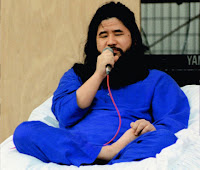3 Aum death-row inmates to testify at Hirata's trial
 TOKYO —In an unusual move, prosecutors will call three former members of the
Aum Shinrikyo religious cult to testify in the trial of another former
Aum member, Makoto Hirata, in a lay judge trial expected to begin at the
Tokyo District Court later this year.
TOKYO —In an unusual move, prosecutors will call three former members of the
Aum Shinrikyo religious cult to testify in the trial of another former
Aum member, Makoto Hirata, in a lay judge trial expected to begin at the
Tokyo District Court later this year.It will be the first time that death-row inmates have been called to tesify as witnesses, Sankei Shimbun reported Saturday.
The three are Tomomasa Nakagawa, 50, Yasuo Hayashi, 55, and Yoshihiro Inoue, 43. They are among 13 former Aum Shinrikyo members, including cult founder Shoko Asahara, who were sentenced to death for the 1995 Tokyo subway nerve gas attack, and several other crimes, including murder and kidnapping.
Hirata, 48, has been indicted for his role in the kidnapping and murder of a relative of a cult member in 1995.
 Among the thousands of injuries, some were injured permanently by inhaling or coming into contact with the gas, which cripples the nervous system.
Among the thousands of injuries, some were injured permanently by inhaling or coming into contact with the gas, which cripples the nervous system. Hirata turned himself in at a police station on New Year’s eve 2011 after at first being turned away by another police officer who didn’t recognize him.
The cult remains legal in Japan, where the constitution guarantees freedom of religion, but it has renamed itself Aleph — after the first letter in the Hebrew alphabet. Authorities keep it under close surveillance, saying hardcore followers still revere Asahara.
The cult is believed to have some 1,500 followers in Japan and 200 others in Russia, police officials say.
Courtesy: Japan Today